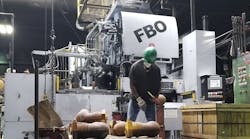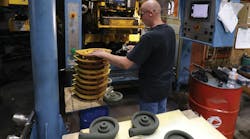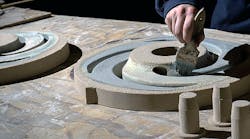Chromalloy Castings is planning a $5-million plant to produce ceramic cores adjacent to the new investment casting operation it has started up in Tampa. The 40,000-ft 2 facility will be under construction next year and in operation early in 2012.
“The facility will further differentiate Chromalloy as a world-class casting operation and single source service provider for engine component manufacture,” stated Chromalloy president Armand F. Lauzon, Jr.
The company is an operating division of Chromalloy Corp., which designs, manufacturers, and services turbine airfoils and other engine components for commercial and military aircraft and industrial gas turbine engines. It also offers advanced repairs, coatings, and FAA-approved replacement parts for turbine airfoils and other critical engine components for commercial airlines, the military and industrial turbine engine applications.
Earlier this year Chromalloy Castings started up its new, $30-million investment casting plant in Tampa where it produces turbine blades and vanes for aerospace and IGT engines, in nickel- and cobalt-based super-alloys, and some stainless steel grades. The plant has been ramping up since May, and replaces a former operation that Chromalloy determined had insufficient capacity to produce the volume and range of castings for OEMs and for the operations within its own global organization of turbine engine supplies and services.
The new plant replaced an older plant nearby, and Chromalloy Castings also operates a plant producing turbine engine components and parts in Carson City, NV.
Ceramic cores form the complex internal shapes of the investment cast components.
“The addition of a new core production on-site will reduce the casting timeline and eliminate the need to purchase cores elsewhere,” according to Lauzon said. “That means our customers will benefit from even more efficient production schedules and greater consistency and process control.”
Latest from Molds/Cores
Latest from Molds/Cores
Industry Events
FM&T's 2024 Guide to Exhibitors
April 19, 2024
Melt/Pour
Automated Pouring Takes on the Challenge
March 1, 2024
Issues and Ideas
Progress in e-Mobility Manufacturing
Feb. 29, 2024
Molds/Cores
New Molding Machine Fits Right In
Feb. 27, 2024
Molds/Cores
The Next Step in Horizontal Molding
Feb. 2, 2024
Molds/Cores
Change Is Now Non-Negotiable
Feb. 2, 2024
Molds/Cores
Foundry Starts 3D Printing Expansion
Jan. 4, 2024








